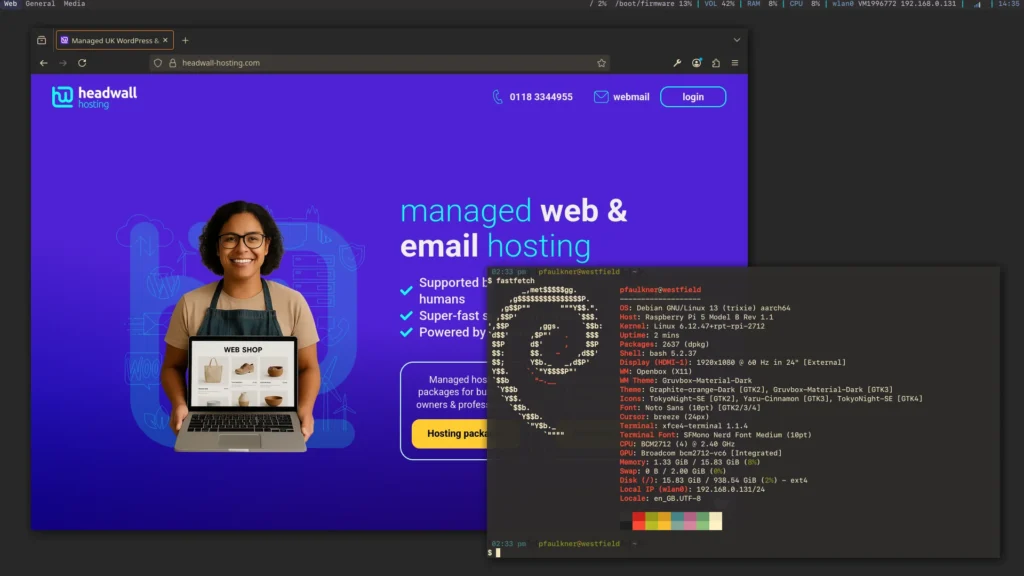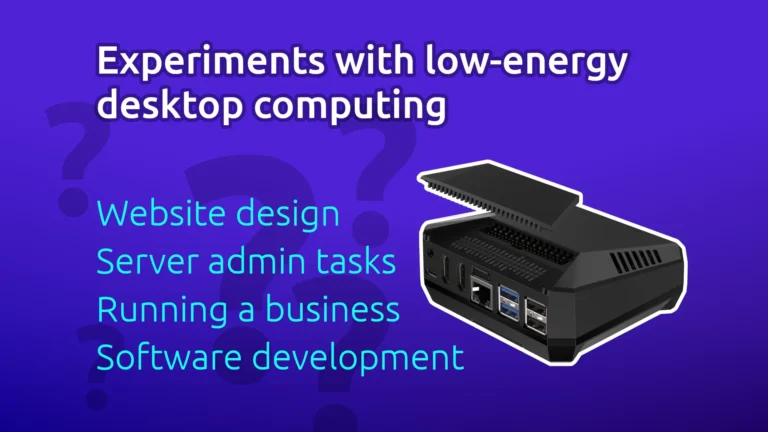With talk of how much energy AI data centres consume, I thought it would be interesting to flip things around and investigate low-energy desktop computing for day-to-day use.
I’m a software guy at heart, and I run a network of web servers for a living. Although the web servers need to be powerful, it’s important to me that they’re powered by renewables. That’s all well and good, but my desktop workstation is a classic big-rig of a machine with a hungry graphics card in it.
So my question is…
Can a web developer use a Raspberry Pi 5 as a daily driver?
My go-to laptop is a secondhand Thinkpad X280 (rather than a modern high-end laptop), so I’m somewhat used to mid-level hardware performance. This test is to see how a modern Raspberry Pi should compares to a 7 year-old laptop.
The hardware
- Raspberry Pi 5 with 16 GB RAM (4 cores)
- Official RPi 5 PSU
- 1 TB NVMe Drive
- Argon One v3 case
- HDMI monitor @ 1920×1080
This came to just over £240
NOTE: I’m not sponsored for any of this. I bought the equipment myself, after doing my own research.
Setting up the software
Day-to-day, I spend most of my time either in a terminal (doing hardcore tech-wizard mojo) or in a web browser (figuring out why JavaScript isn’t working properly). The OS already comes with a terminal, so the first thing I needed to do was install Firefox Developer Edition.

First thoughts are that it works OK. Firefox loads quickly, and browsing the web works as you’d expect. Running the Dev Tools pane makes things feel a touch sluggish, but it’s perfectly usable. Although it’s not super-fast, the experience is not the “wading through treacle” that I feared. So far, so good.
I don’t use VS Code in my workflow, but I wanted to see how the device handles beefier software. Running Firefox (3x tabs) and VS Code consumes less than 20% of the device’s RAM. That’s a nice result, and VS Code is more than usable.
It’s not quite as slick as my laptop, but it’s not far off.
So… Is this a thing?
In short, yes (probably). As I make more efforts to reduce my carbon footprint, while still being able to develop & host modern website infrastructure, I figured the Raspberry Pi desktop would be fun to try. It genuinely has the capacity to replace my big-rig desktop for most of my day-to-day work.
The next phase of this experiment is to actually do it – set aside the big workhorse and put the sprightly little Raspberry front and centre for a week. Lets see how that goes…


